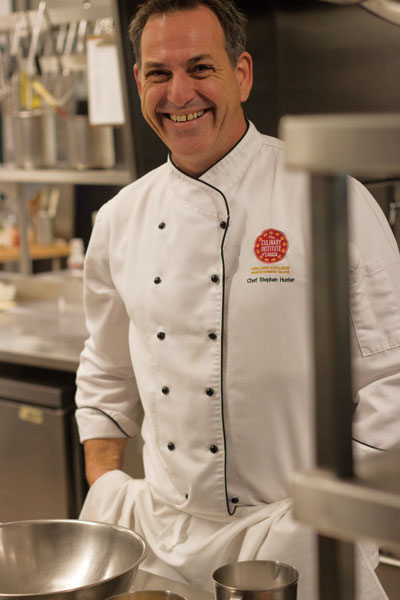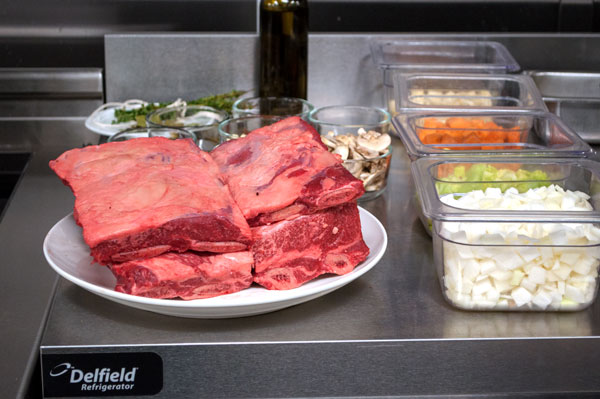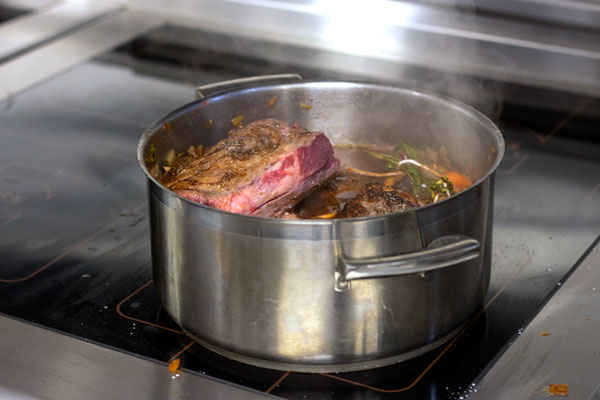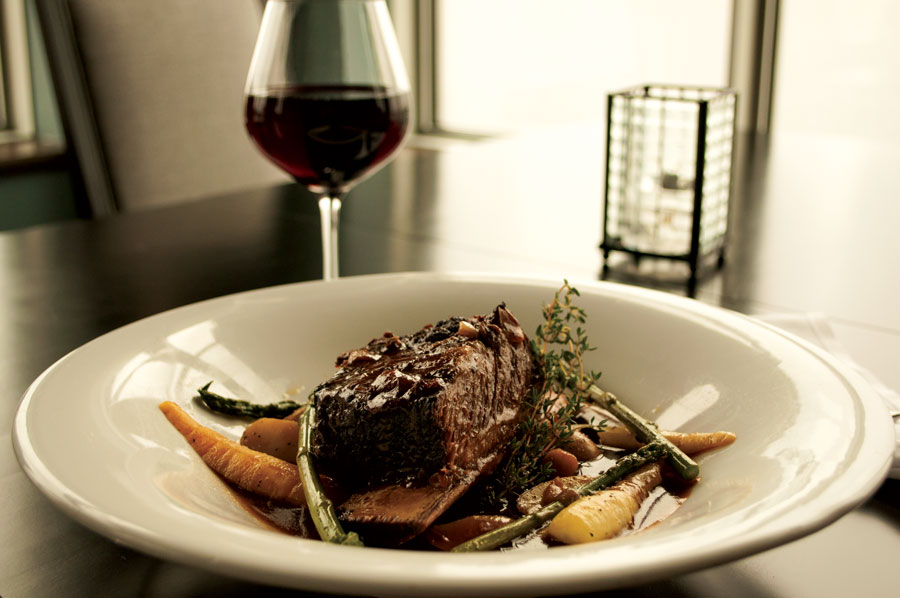Braising

photo credit: Richard Schroeter/Salty
There’s no better remedy to winter’s chills than a big, hot kitchen stove. While these wood-fired behemoths once doubled as a home’s main heat source, our modern appliances are often overlooked as a source of warmth during this darkest and coldest month of the year.
When I am thinking of warm, comforting, cold weather cooking I am drawn to braising. Its rich flavours work well with beef and with winter vegetables, specifically the root vegetables from your past year’s garden or a local farm’s cold storage.
The key to any good braise is a stock pot or Dutch oven with a tight-fitting lid. The cooking liquid should not be allowed to evaporate. Braising uses low temperatures over longer time to create the delicious flavours in this recipe, but also has the added benefit of warming your kitchen while it cooks. As the meat slowly braises, the flavours develop and the fibers in the meat break down, creating a tender meal. In this way it can be useful as a method to cook less expensive cuts of meat. The go-to recipe for a braise is typically a pot-roast of beef, but with a little help from our friends at Atlantic Beef Products, I opted for a bone-in short rib recipe using their Prince Edward Island Certified Premium AAA Beef.

Ingredients ready to go//Photo Credit: Richard Schroeter/Salty
The process for cooking starts with browning the beef ribs in fat at a higher heat. This quick hit of heat will add flavour and depth to the final dish. If you are vegetarian, you can use the same method to caramelize the sugars in your vegetables, but with a high-temperature cooking oil. Braising is also well-suited to many vegetables, including leeks, celery, endive, and all root vegetables. Typical cooking time will be reduced for vegetables.

Ready for the oven//Photo Credit: Richard Schroeter/Salty
If you don’t wish to use wine in your braising recipe, it can be replaced with additional low or no-sodium stock or water. You can make your own stock, or purchase locally-made. We used The Bony Broth Co.’s beef stock in our recipe. It is important to ensure that the meat is not fully submerged in liquid (approximately 2/3 of your meat should be covered), so adjust quantities according to your pot and meat. Often the remaining liquid is used to create a sauce or gravy, so having quality ingredients will add to its flavour.
Braised beef short ribs
Ingredients
6 lbs bone-in beef short ribs
Kosher salt and freshly ground black pepper
3 tablespoons olive oil
4 cups onion, chopped
2 cups carrots, peeled and chopped
2 cups celery stalks, chopped
2 cups parsnip, peeled and chopped
1 bulb garlic, peeled and chopped
2 tablespoons tomato paste
2 tablespoons molasses
2 tablespoons red wine vinegar
1 cup button mushrooms, chopped
1/4- inch slice of fresh ginger
4 cups dry red wine (preferably Cabernet Sauvignon or Shiraz)
12 sprigs fresh thyme tied in a bundle with butcher’s twine
2 bay leaves
3-4 cups beef stock
Preparation
Preheat oven to 375°F. Season short ribs with salt and pepper. Heat oil in a large Dutch oven or heavy bottom braising pan over medium-high heat. Brown short ribs on all sides, working in batches so as not to crowd ribs in the pan. This can take 5-8 minutes per batch. Transfer short ribs to a plate. Pour off all but 3 tablespoons of oil and drippings from pot.
Add onions, carrots, parsnip, and celery to pot and cook over medium-high heat, stirring often, until onions are browned, about 5 minutes. Add the garlic and tomato paste; cook, stirring constantly, until well combined and deep red, 2-3 minutes. Stir in molasses and red wine vinegar and cook for 2 minutes, continually stirring. Add wine and continue to cook, reducing the wine by half.
Place short ribs with any accumulated juices back into the pot. Add thyme bundle and bay leaf. Add stock until the ribs are half submerged. Bring to a boil, cover, and transfer to pre-heated oven.
Cook until short ribs are tender, 2-2 1/2 hours. Remove from oven and transfer short ribs to a platter.
Strain the remaining braising liquid into a clean pot, removing solids. On stovetop, reduce the strained sauce approximately 20 minutes on medium/high heat to concentrate the flavor. If necessary, thicken sauce with a 1:1 mixture of cornstarch and water. Strain sauce from pot into a measuring cup. Spoon fat from surface of sauce and discard; season to taste with salt and pepper. Serve with mashed potatoes or polenta. Spoon sauce over ribs and/or sides.
- THE SALTY Chef with Chef Stephen Hunter - October 1, 2018
- THE SALTY CHEF-BOUILLABAISSE - September 1, 2018
- THE SALTY CHEF – with Chef Stephen Hunter - August 1, 2018
- THE SALTY CHEF with Chef Stephen Hunter - July 1, 2018
- THE SALTY Chef with Chef Stephen Hunter - June 1, 2018
- THE SALTY CHEF-BISQUE - May 1, 2018
- THE SALTY CHEF-THE GOOD BURGER - March 31, 2018
- THE SALTY CHEF-with Guest Chef Sarah Forrester Wendt - March 1, 2018
- THE SALTY CHEF – with Chef Stephen Hunter - February 1, 2018
- THE SALTY CHEF with Chef Stephen Hunter - January 1, 2018


